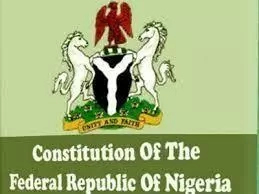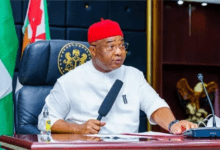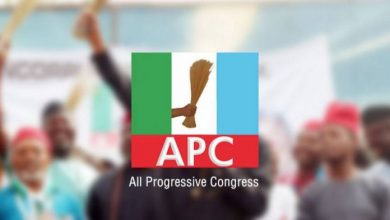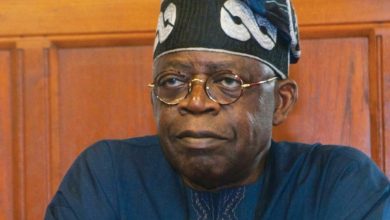Constitutional Development in Nigeria; Historical Timeline, Problems, Prospects
The country, Nigeria was created through Constitution and had now grown into an independent nation since 1960, having gone through the period of colonial rule under the British government, which lasted for over a century, with the annexation of Lagos in 1861. The history of constitutional development in Nigeria can simply be separated into two:
Firstly, The colonial or the pre-independence constitutions, which actually covers about 6 among the constitutional instruments, that is, 1914, and 1922, and 1946, and 1951, and 1954 and 1960, and
👉 Relocate to Canada Today!
Live, Study and Work in Canada. No Payment is Required! Hurry Now click here to Apply >> Immigrate to CanadaSecondly, The post-independence constitutions which covers about 3 constitutional instruments, that is, 1963, and 1979 and 1999.
Read Also: The Process of Amending The Nigerian Constitution

Although, every successive pre-independence constitutional instrument was actually enacted via an order-in-council of the then British monarch, their counterparts of the post-independence constitution were also enacted by both:
An Act of parliament (1963 Constitution &
Military decree (1979 and 1999).
Historical Timeline
1914 Constitution:
The 1914 Constitution, according to history, amalgamated both the Colony and Protectorate of Southern Nigeria with that of the Protectorate of Northern Nigeria which were under the colonial authority of the British Monarch.
And the emergent entity was administered by the same authority via its appointed agent, who was a Governor-General, by name, Lord Frederick Lugard.
Although it was the 1914 Constitution that created a Legislative Council of the then Colony, the legislature was however restricted from making laws for the country, except the Colony of Lagos, whereas, the Governor General was to make laws for the whole of the country.
👉 Relocate to Canada Today!
Live, Study and Work in Canada. No Payment is Required! Hurry Now click here to Apply >> Immigrate to CanadaRead Also: 7 Functions of Nigerian Federalism
Sir Clifford Constitution Of 1922
After 8 years, the 1914 Constitution was replaced with that of Sir Clifford Constitution of 1922. Interestingly, the 1922 Constitution had established a 46 member Legislative Council, and was given to it the law making responsibilities for both the Colony of Lagos and that of the southern provinces.
The 1922 Constitution had also introduced the elective principle with both Lagos and Calabar and were granted the franchise of electing their representatives to the established Legislative Council.
Arthur Richard Constitution Of 1946:
The year, 1946 had seen the adoption of the Arthur Richard Constitution which defined Nigeria,, in terms of regions, that is, it divided the colonised country into three (3) main regions namely:
- The Northern region, and
- The Western region and
- The Eastern regions.
This constitution actually came into effect immediately the end of the Second World War.
Sir John Macpherson Constitution Of 1951:
After 5 years, the 1946 Constitution had to ditch in favour of Sir John Macpherson Constitution of 1951. History had it that, its successor had to suffer from the charge of becoming an imposition of the then British colonialists, excluding the indigenous people of Nigeria from making inputs. The Constitution had represented a major advancement on the old.
Lyttleton Constitution Of 1954
The 1954 Constitution was said to have made the then regional governments independent of the central government, in terms of subjects and legislative powers as well, which was allocated to them.
Lagos was made the Federal Capital Territory; Hence, the Lyttleton Constitution was best described as being the transition instrument that led to Nigeria’s independence in 1960.
Read Also: List of 774 Local Governments in Nigeria
1960 Constitution:
Nigeria, as a nation, was granted independence, thus, becoming a sovereign state under the 1960 Constitution. The constitution provided for a parliamentary system of government.
It was the Constitution that defined ‘Nigerian citizenship’, as well as, outlined constitutionally protected rights for every citizen and person in living in Nigeria.
1963 Constitution:
The 1963 Constitution actually led to the establishment of the first republic in Nigeria, and replaced the appointed Governor-General by the British monarch with a elected President by members of the Nigerian federal legislature.
1966 Constitution:
The 1966 Constitution was set aside, owing to a violent military coup d’etat that disrupted the 1st Republic with unimaginable military dictatorship, as well as, the Nigeria’s civil war (1966-1969), under 4 military Heads of State, which ended in 1979 by the time, General Olusegun Obasanjo military regime led to the 2nd Republic, which as to do with the promulgation of a new Constitution.
1979 Costitution:
The 1979 Constitution introduced Nigeria to a presidential system of government, which was with a federal government, and 19 states, and a federal capital territory, and 3 arms of government, as well as, 3 levels of government.
The 1979 Constitution was terminated in 1983 as the civilian administration of President Shehu Shagari and Vice President Alex Ekwueme was toppled.
General Muhammedu Buhari and Tunde Idiagbon had to introdued military dictatorship after succeeding Shehu Shadari’s government, and seeded about 3 extra-constitutional regimes, that is, the General Ibrahim Babangida military dictatorship (1985-1993), and Mr. Ernest Shonekan interim civilian-led regime, and General Sani Abacha military dictatorship (1993-1998) as well as, General Abdulsalami Abubakar military administration, a regime that successfully birthed the 3rd Republic in 1999 hence, the introduction of the 1999 Constitution.
Read Also: The Role of State Government in Nigeria
Problems:
Revenue allocation
Revenue allocation formula, l think is not well spelled out in the constitution. Revenue allocation has to do with the sharing formula of financial resources among states, so as to enhance the country’s economic growth and development, as well as, reducing inter-governmental tensions thus, promoting national unity.
Minority Issue And State Creation
I also think that there are some issues here, given the nature of multi-ethnicity in the country. The issue of minorities has constituted a major problem, which is militating against Nigeria’s development.
Prospects
Political stability
The aim of constitution revolved around the promotion unity in Nigeria, as well as, bringing the government closer to the citizens of the country.
Constitution was put together with the sole aim of allowing peaceful coexistence among Nigeria’s citizens, and if the government is brought closer, the people will experience stability and cohesion which will in turn promote national integration.
National integration
One cannot undermined the important of national integration if we are talking about growth and development. This what the constitution is attempting at promoting in order to engender peace, as well as brotherhood and unity among Nigerians.
And if this is achieved, issues such as, secession, and ethnic rivalry, including fear of domination by minorities will be addressed.
Read Also: Functions Of The Nigerian Federal Government
Conclusion
The historical timeline of constitutional development in Nigeria its problems and prospects have been simply discussed in the above article, and l am hopeful that the information will be useful to many








